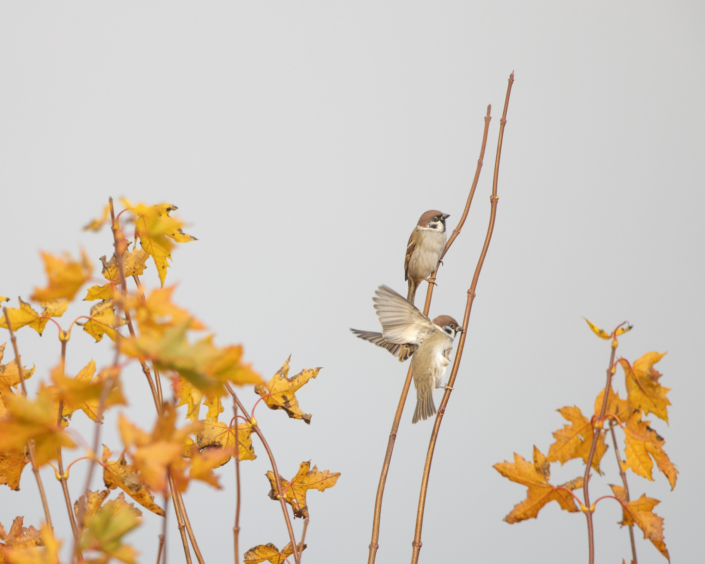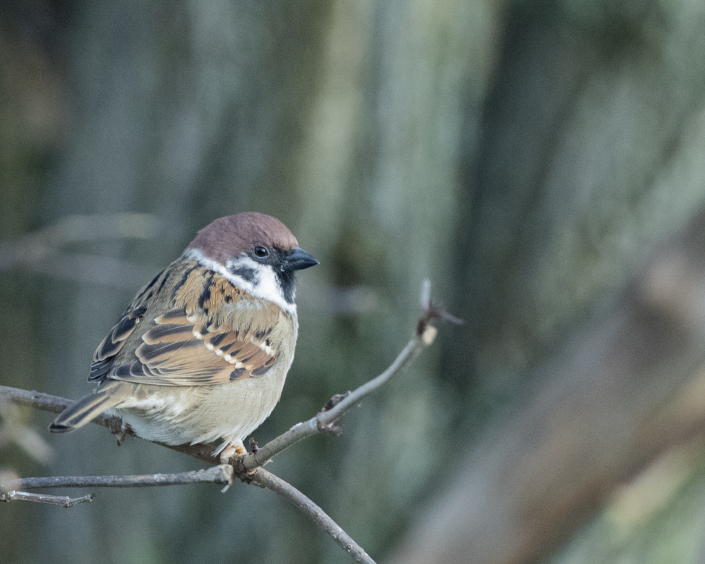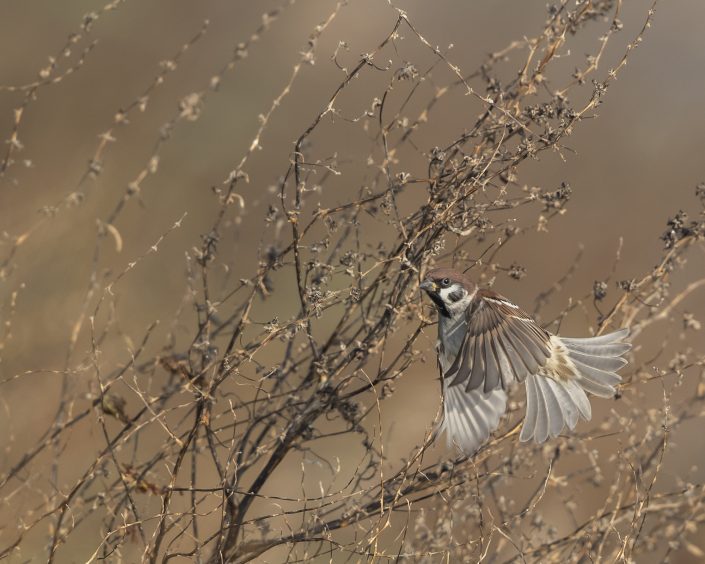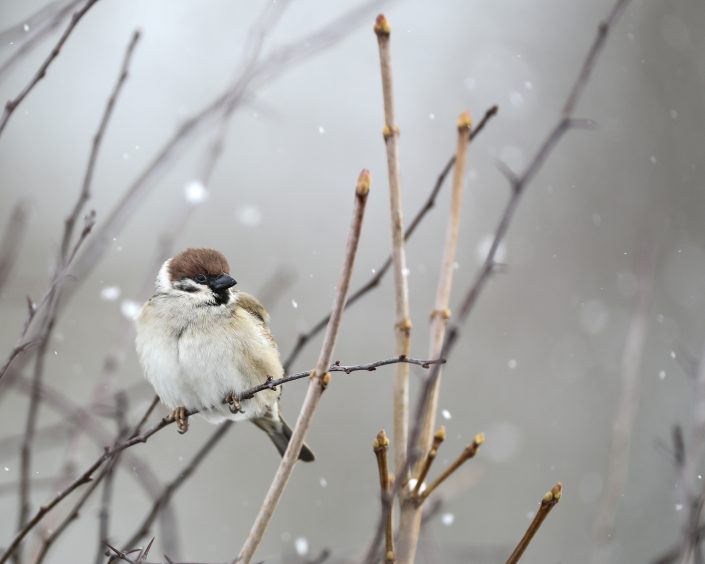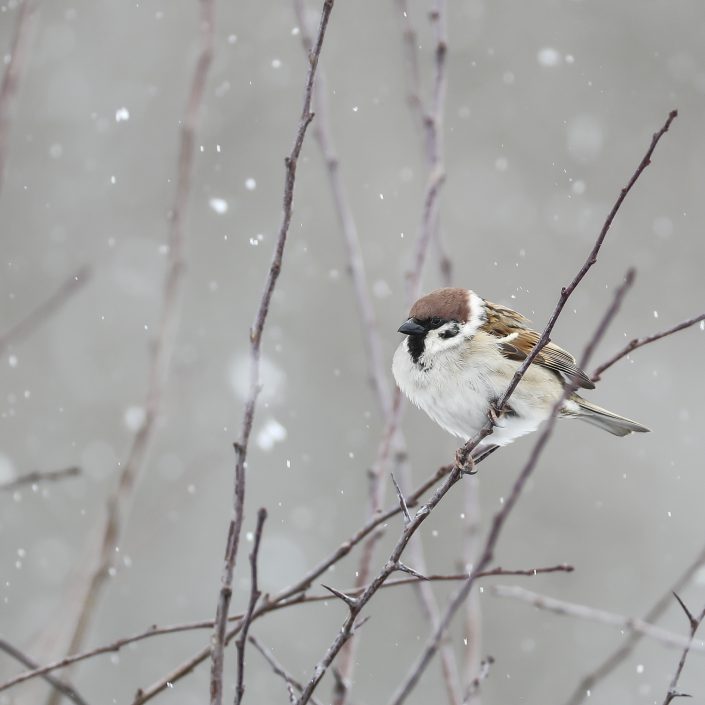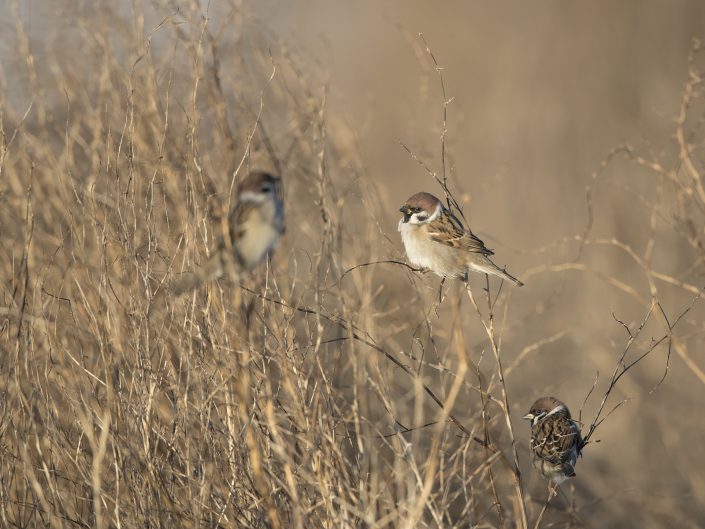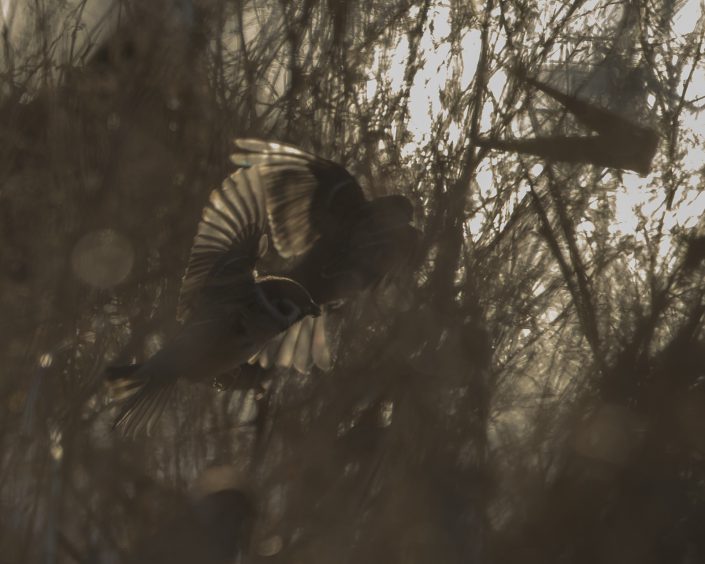This post is also available in: Swedish
Eurasian tree sparrow – Passer montanus
Eurasian tree sparrow – Passer montanus
Eurasian tree sparrow is a passerine bird in the sparrow family with a rich chestnut crown and nape, and a black patch on each pure white cheek. The sexes are similarly plumaged, and young birds are a duller version of the adult. This sparrow breeds over most of temperate Eurasia and Southeast Asia, where it is known as the tree sparrow, and it has been introduced elsewhere including the United States, where it is known as the Eurasian tree sparrow or German sparrow to differentiate it from the native unrelated American tree sparrow. Although several subspecies are recognised, the appearance of this bird varies little across its extensive range.
The Eurasian tree sparrow’s untidy nest is built in a natural cavity, a hole in a building or the large nest of a European magpie or white stork. The typical clutch is five or six eggs which hatch in under two weeks. This sparrow feeds mainly on seeds, but invertebrates are also consumed, particularly during the breeding season. As with other small birds, infection by parasites and diseases, and predation by birds of prey take their toll, and the typical life span is about two years.
The Eurasian tree sparrow is widespread in the towns and cities of eastern Asia, but in Europe it is a bird of lightly wooded open countryside, with the house sparrow breeding in the more urban areas. The Eurasian tree sparrow’s extensive range and large population ensure that it is not endangered globally, but there have been large declines in western European populations, in part due to changes in farming practices involving increased use of herbicides and loss of winter stubble fields. In eastern Asia and western Australia, this species is sometimes viewed as a pest, although it is also widely celebrated in oriental art.
It sounds like this
Recording by José Carlos Sires from Xeno canto



